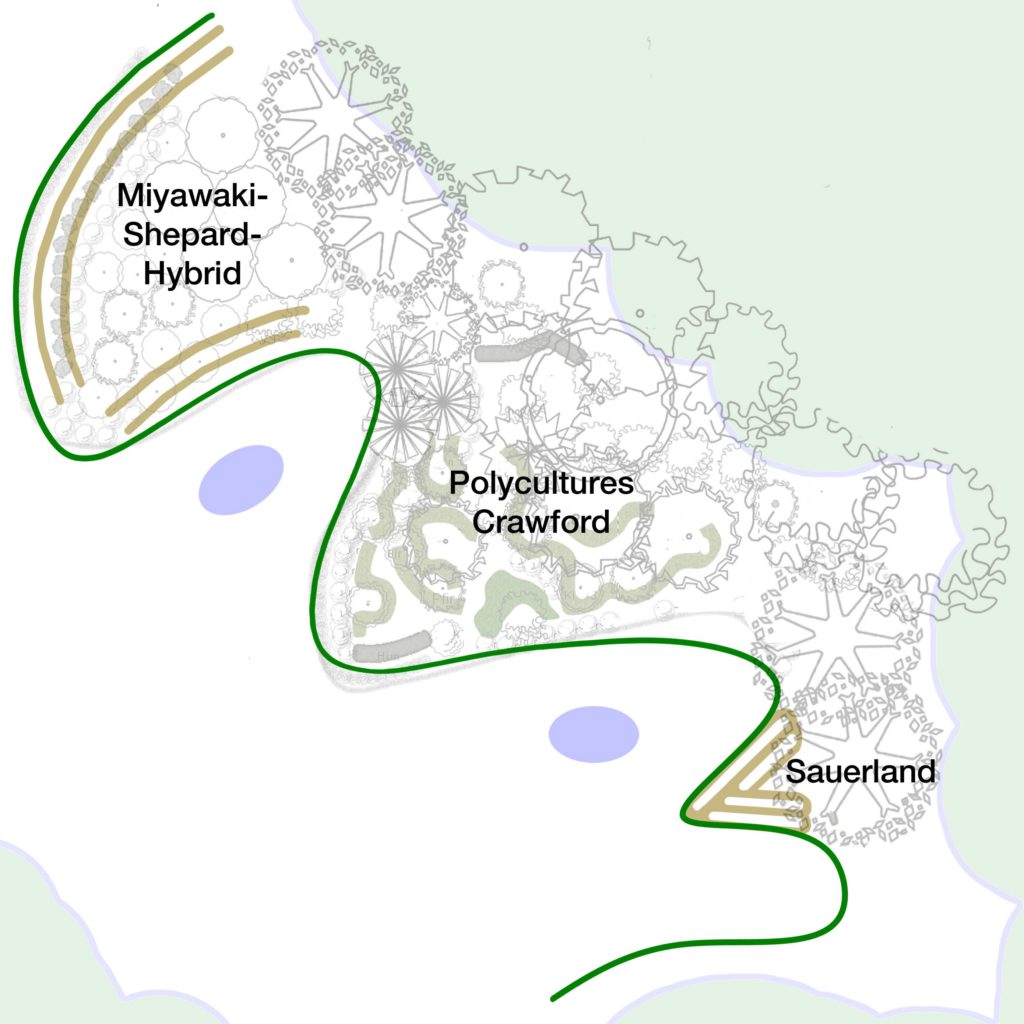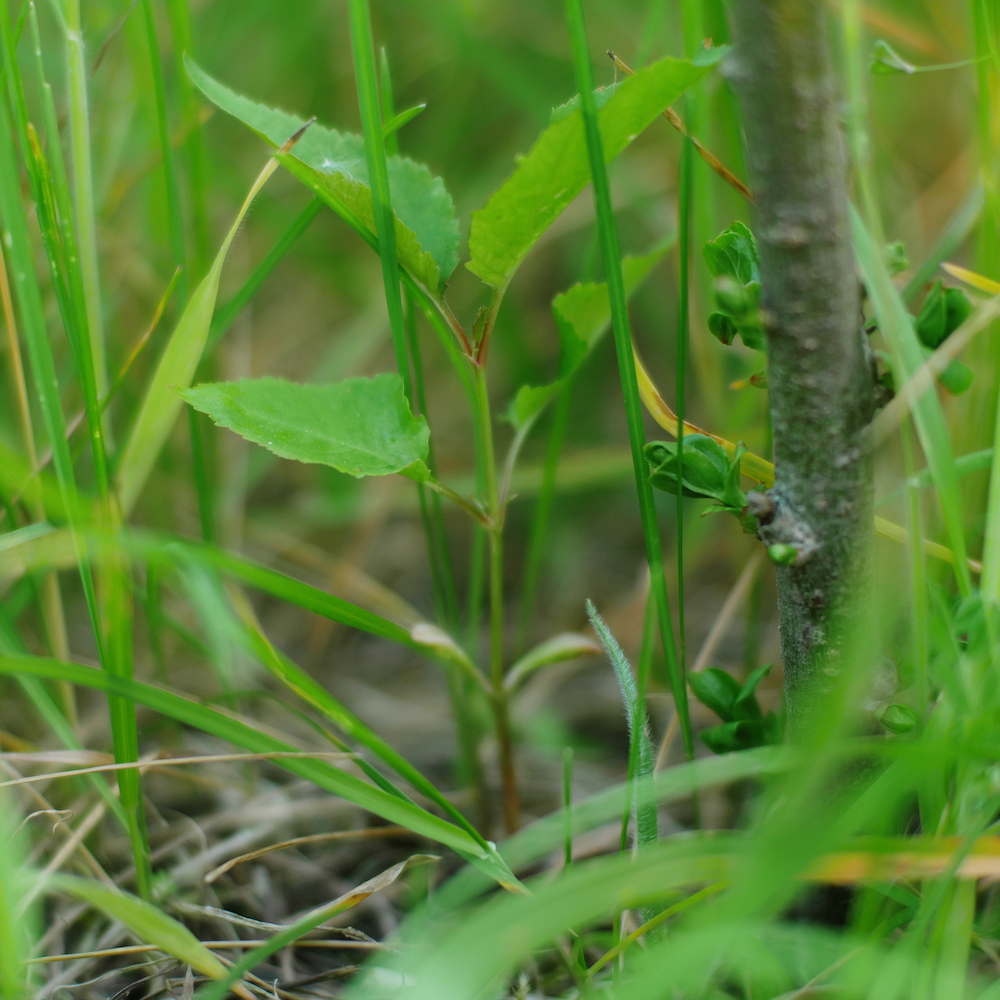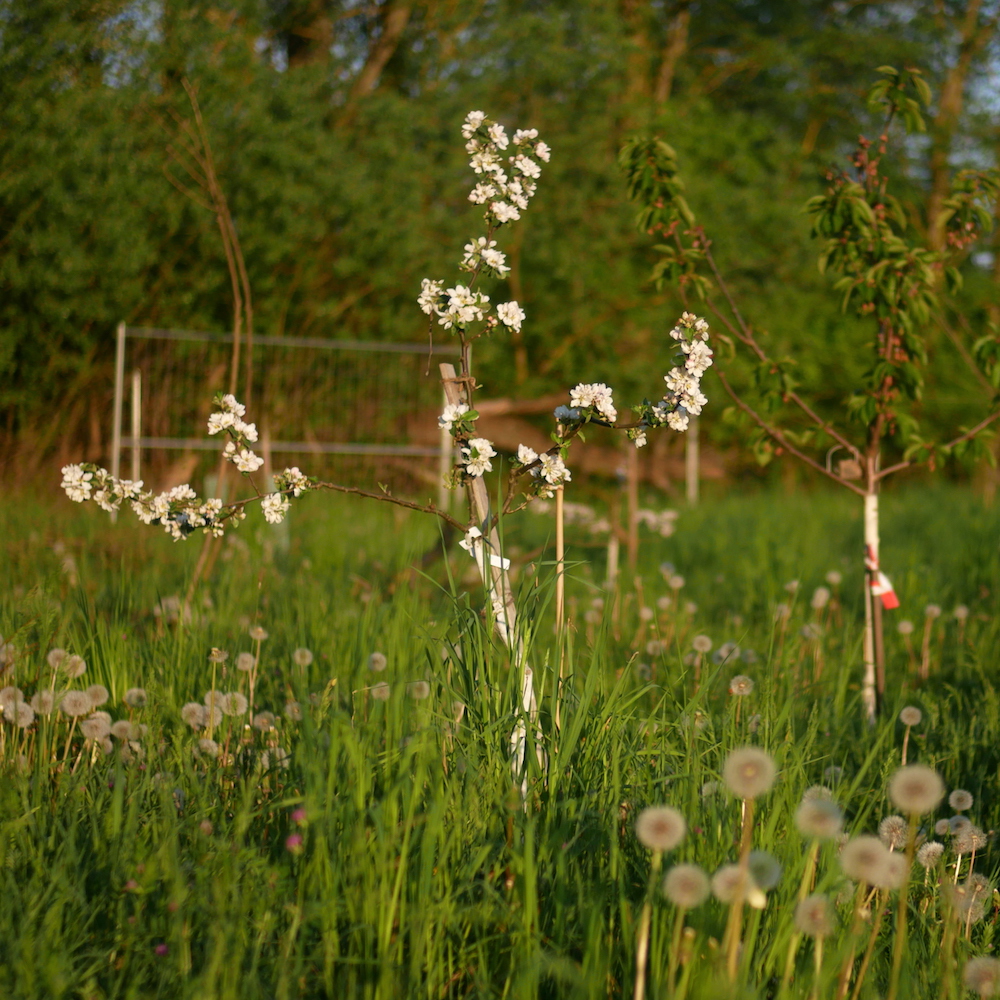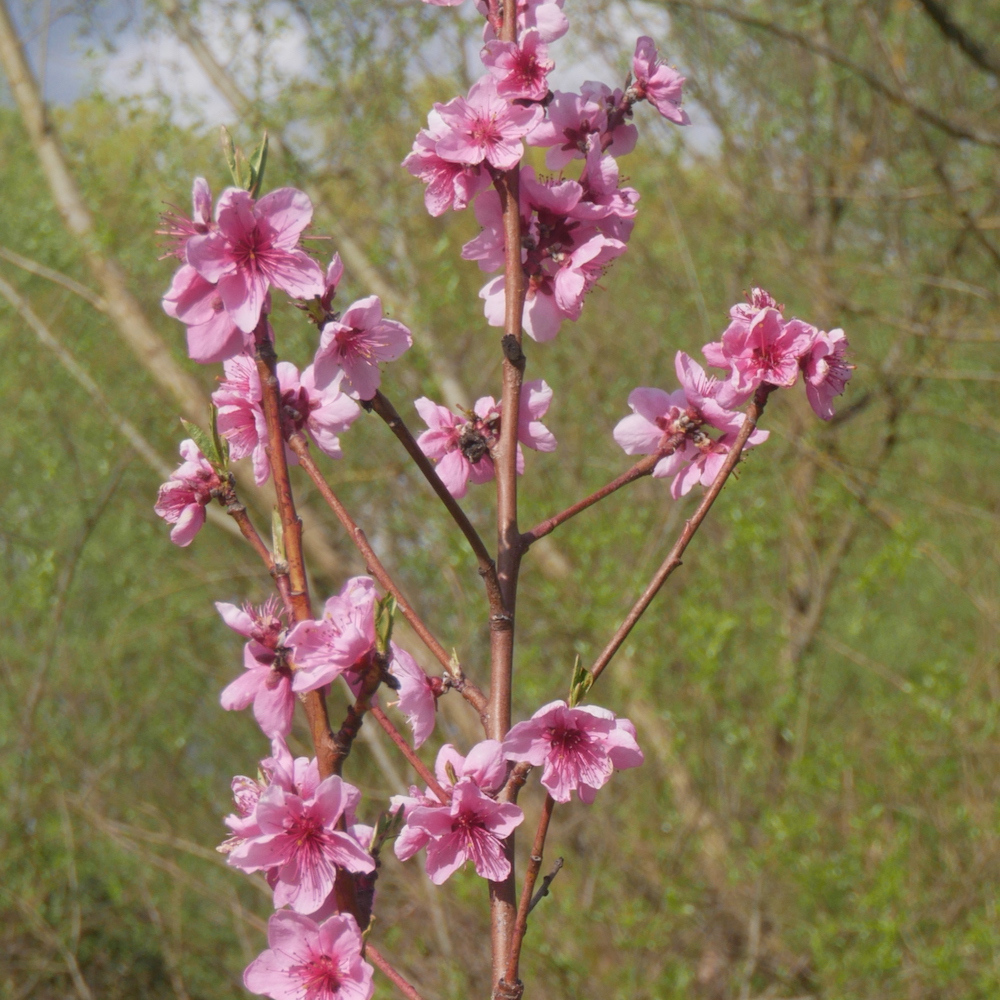Since 2022, we have been transforming part of the grassland on the South Meadow into a diversely designed area with two sun traps surrounded by different forest garden systems. In each “finger” we are trying out a different approach to how a forest garden can be designed and implemented.

The sun traps
Sun traps are sheltered areas that create a warmer microclimate that also allows for the cultivation of more heat-loving plants, such as fig trees. Due to the open orientation to the southwest and the protection by shrubs and trees on the sides and to the north, these sun traps warm up in the afternoon and evening, so that temperatures are higher during the cool night than they would be in an unprotected area. The warmth of the sun is literally trapped.
Within the sun traps we want to create small pools as animal watering places that encourage diversity of wildlife and especially beneficial animals. The water surface is also reflecting a little more solar heat into the sun traps.
The forest garden systems
In each “finger” around the sun traps we experiment with an other forest garden system:
Western zone – surrounded by berry and vegetable rows, this low-maintenance “Miyawaki-Shepard-Seedlings-Forest” will produce the hardiest trees adapted to the area. Learn more
Middle zone – This area hosts polycultures according to the British horticulturist Mark Crawford. Selected species with guilds and neandering berry rows. High maintenance, but also noble varieties from the beginning and already larger initial plants for faster yield. Learn more
East Zone – The “Sauerland” is a small but very high-maintenance area that requires a lot of irrigation. Here, the soil chemistry in particular is very much changed to a low pH environment for blueberry cultivation. Learn more
Syntropic agroforestry – our most complex forest garden system.
In 2023, the first plantings began on the north meadow, where we are creating an area over time in accordance with the principles of Ernst Götsch. Syntropic Argoforestry is labour-intensive. It quickly becomes independent of external input due to the very high biomass production and regular heavy pruning. First impressions



